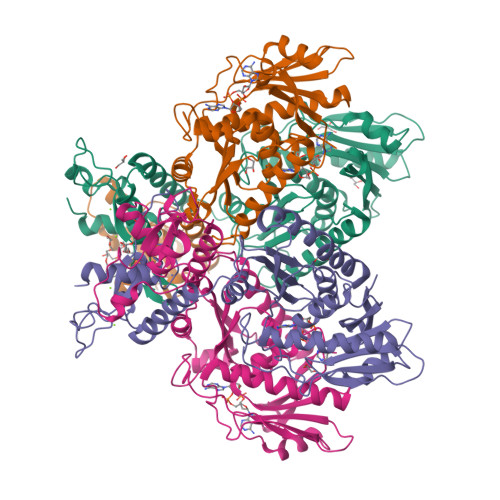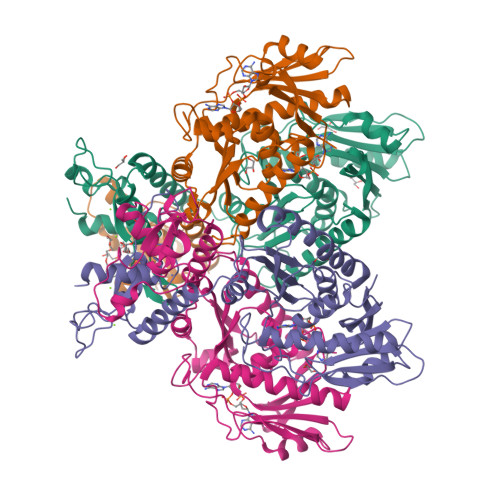Activation of CBASS Cap5 endonuclease immune effector by cyclic nucleotides.
Rechkoblit, O., Sciaky, D., Kreitler, D.F., Buku, A., Kottur, J., Aggarwal, A.K.(2024) Nat Struct Mol Biol 31: 767-776
- PubMed: 38321146
- DOI: https://doi.org/10.1038/s41594-024-01220-x
- Primary Citation of Related Structures:
8FM1, 8FMF, 8FMG, 8FMH - PubMed Abstract:
The bacterial cyclic oligonucleotide-based antiphage signaling system (CBASS) is similar to the cGAS-STING system in humans, containing an enzyme that synthesizes a cyclic nucleotide on viral infection and an effector that senses the second messenger for the antiviral response. Cap5, containing a SAVED domain coupled to an HNH DNA endonuclease domain, is the most abundant CBASS effector, yet the mechanism by which it becomes activated for cell killing remains unknown. We present here high-resolution structures of full-length Cap5 from Pseudomonas syringae (Ps) with second messengers. The key to PsCap5 activation is a dimer-to-tetramer transition, whereby the binding of second messenger to dimer triggers an open-to-closed transformation of the SAVED domains, furnishing a surface for assembly of the tetramer. This movement propagates to the HNH domains, juxtaposing and converting two HNH domains into states for DNA destruction. These results show how Cap5 effects bacterial cell suicide and we provide proof-in-principle data that the CBASS can be extrinsically activated to limit bacterial infections.
Organizational Affiliation:
Department of Pharmacological Sciences, Icahn School of Medicine at Mount Sinai, New York, NY, USA. olga.rechkoblit@mssm.edu.
























